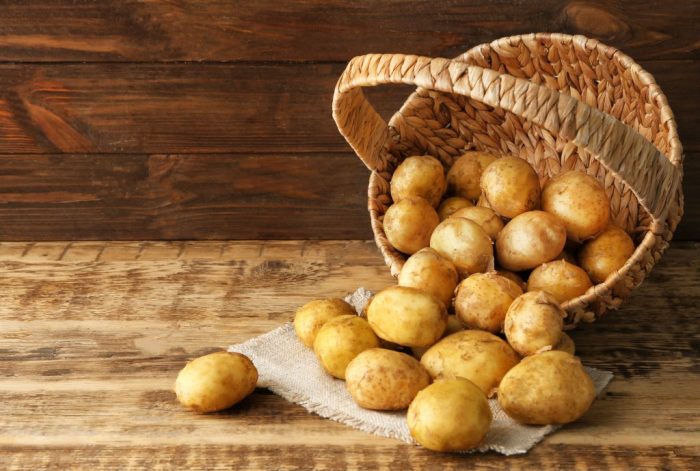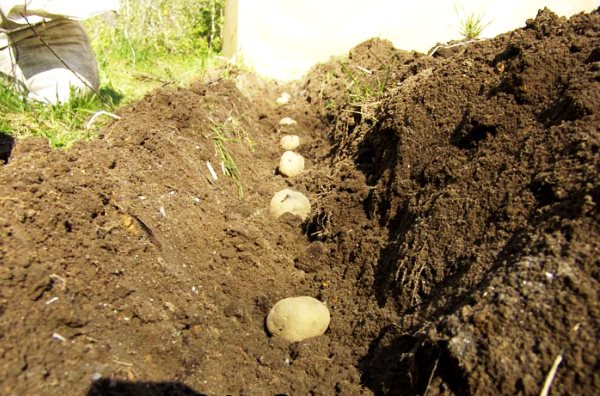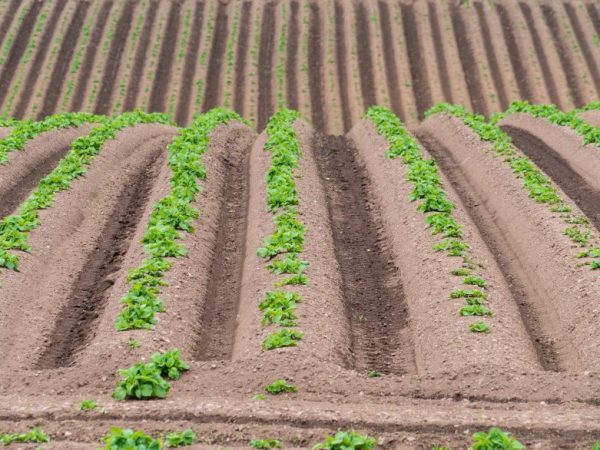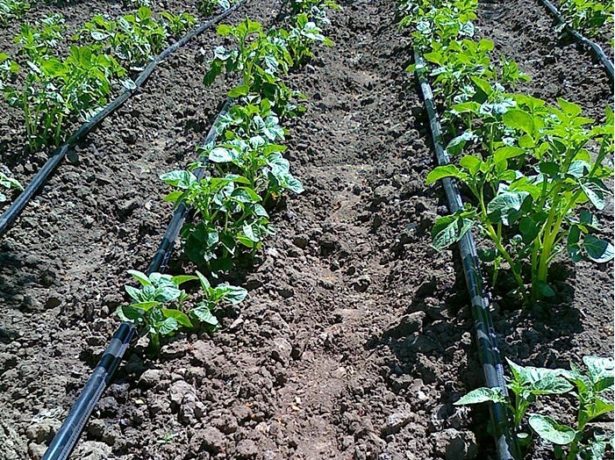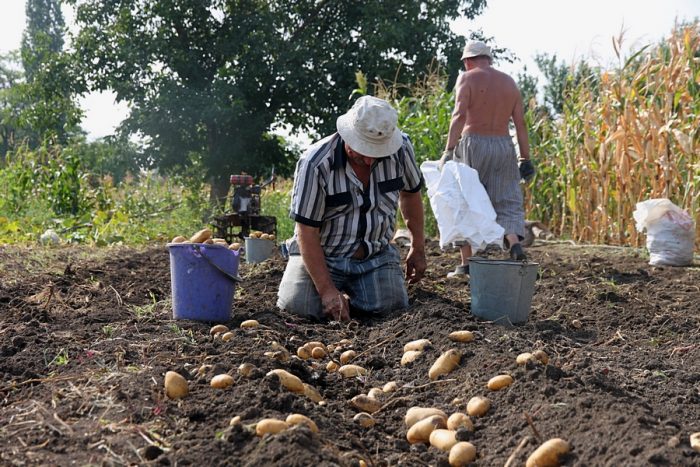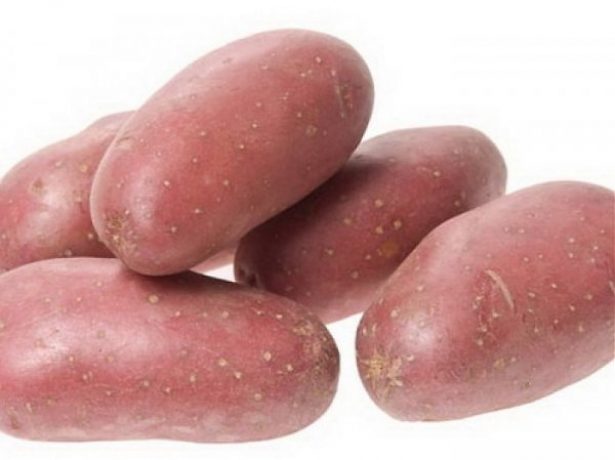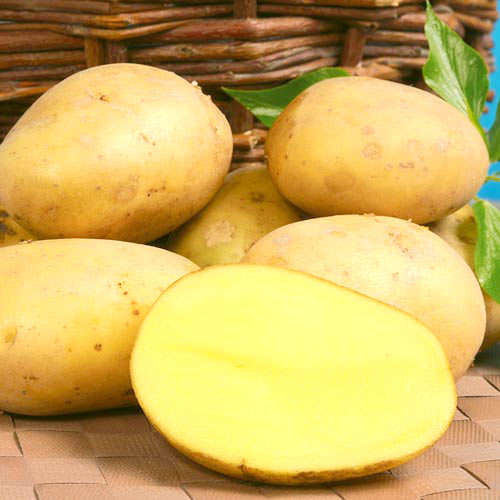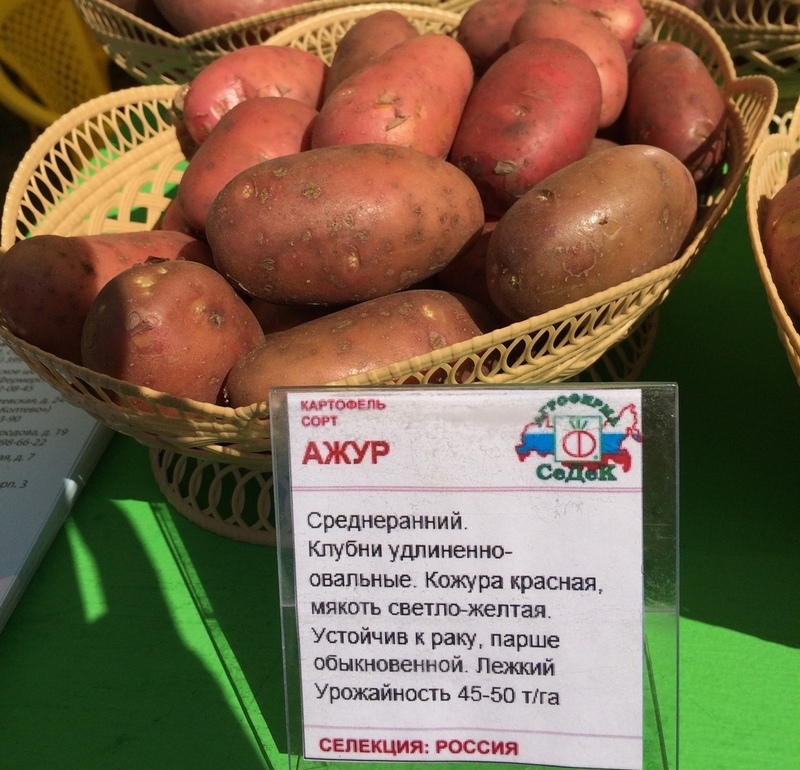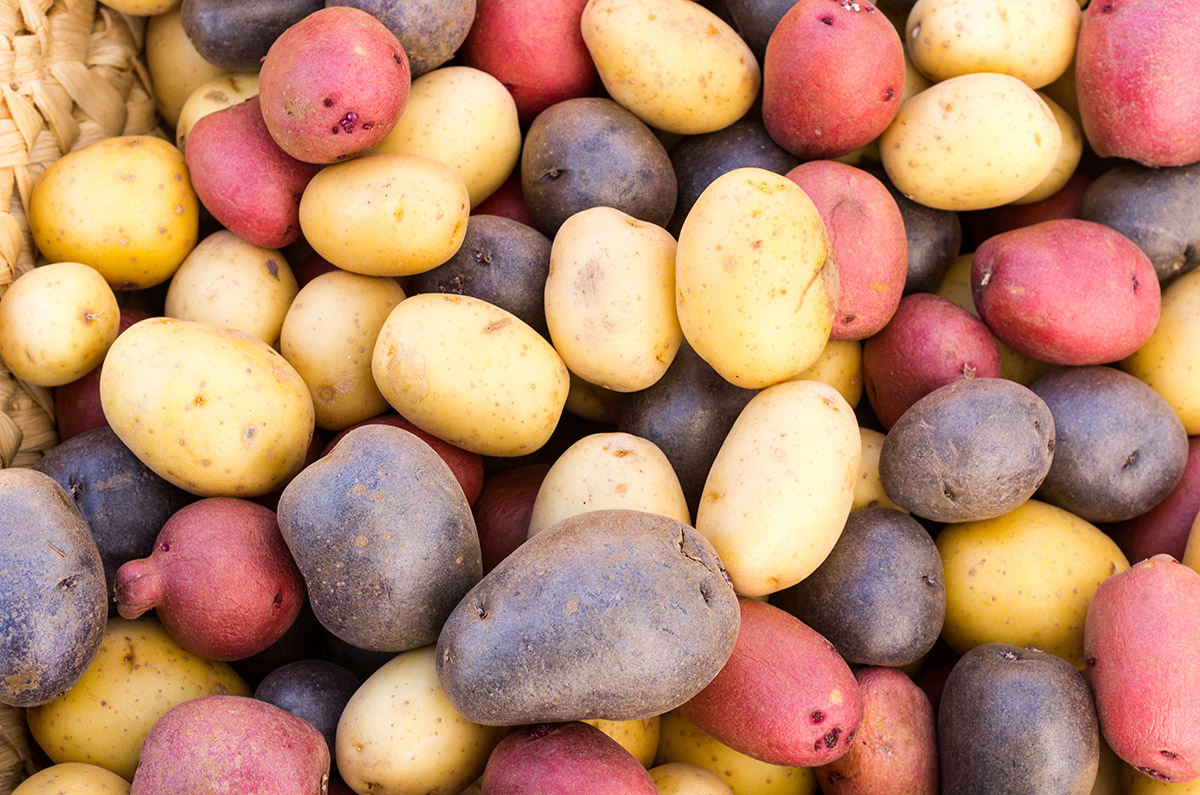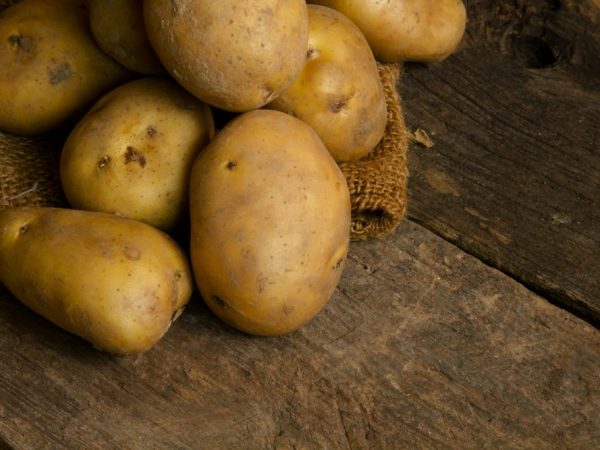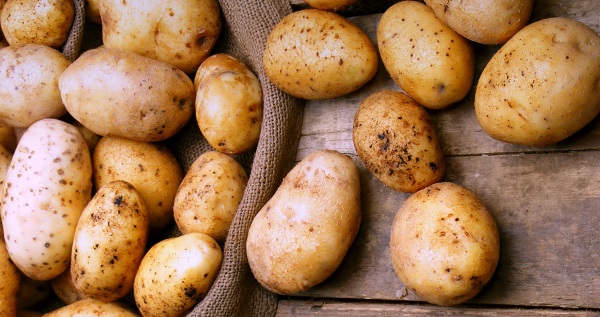Content:
Potatoes are a welcome vegetable, both in everyday dishes and on the festive table. There are many varieties of this plant, but breeders do not stop working on improving this product. One of the new varieties is Latona potatoes, which have already won the hearts of gourmets.
Description
Latona potatoes are a Dutch product, developed in the early 90s by HZPC-Holland specialists. Grown in countries with temperate climates. He has tall, erect bushes, dense tops. It dies off slowly, which allows moisture to remain in the soil for a long time. The leaf plates are large, matte, dark green in color. The flowers are white, moderately located on the bush.
The number of oval-rounded tubers in the bush is 10-15, their weight varies from 85 to 135 g. The peel of the fruit is yellow, slightly rough, the flesh is light yellow, the starch content in it is 16-20%. Potatoes of the Latona variety have excellent taste, they do not crumble during cooking. Designed for growing in temperate climates.
Latona potato variety characteristics
This type of potato belongs to table varieties, its ripening period is 65-75 days. The first young crop can be harvested in 45 days. 40-45 tons of products are obtained from 1 hectare. Varietal potatoes are distinguished by good keeping quality (about 95% of the harvest remains until spring).
Latona adapts to different conditions of keeping - it will give a good harvest, both with a slight drought and with high humidity. It does not have any special requirements for the soil. The peculiarity of the variety is that no damage is observed on the tubers during transportation.
Advantages and disadvantages
According to gardeners, Latona has much more positive qualities, these include the following factors:
- short growing season;
- resistance to weather cataclysms;
- good tolerance for long-term transportation;
- high degree of crop safety;
- resistance to mechanical damage.
Among the shortcomings, one can single out the susceptibility of the scab variety, the excessive coarsening of the peel with untimely harvesting.
Agrotechnics
Predecessors
You cannot plant potatoes from year to year in the same place. Each plant is affected by any diseases, in particular, fungal, and pathogenic spores remain in the soil, negatively affecting the development of the root crop and its yield.
Plants of the lily family (onion, garlic), cruciferous plants (cabbage, mustard, radish), legumes and pumpkin crops are good precursors for potatoes. If the soil is infected with fungal spores, green manures are sown for several years in a row: phacelia, oats, rye, clover.
Landing
Potatoes are planted in several ways.
In the trenches
In this way, it is recommended to plant the vegetable in warm regions in areas with loose sandy soil. Trenches are dug at a distance of 70 cm from each other, up to 15 cm deep. Root crops are laid out taking into account the size: small - after 25-30 cm, large - 35-40 cm.
Smooth fit
With this method, a layer of soil with a depth of half a shovel is raised, a tuber is planted, then the soil is filled up. It is suitable for light areas without stagnant water. Tubers are planted in a checkerboard pattern.
Combs
This method is recommended for areas with heavy, moist soil. Ridges 15-20 cm high are poured, tubers are laid in them. The distance between the ridges is about 70 cm.
Care
Agrotechnical measures are required for the cultivation of a plentiful healthy harvest.
Watering
Usually, potatoes are watered 3 times per season. When planting, it has enough moisture that has accumulated in the ground during the winter, so the first watering is done after germination of seedlings. The soil is moistened the second time during budding - at this time the tubers are actively growing. Water the third time when the soil dries out to a depth of 6 cm.
Hilling
This important event takes place several times a season. Hilling will help to retain moisture, protect the seedlings from spring frosts, and also kill weeds that take away nutrients from root crops. The first hilling is carried out after the emergence of seedlings, then after each watering.
Top dressing
Latona potatoes respond well to various feedings. They are held 3 times per season:
- The first feeding is done at the beginning of vegetative development. To do this, you must: dilute 1 tbsp in 1 bucket of water. spoon urea, under each bush shed 0.5 liters of solution.
- When making a second top dressing, the budding process will accelerate: 3 tbsp is dissolved in 1 bucket. tablespoons of ash and 1 tbsp. a spoonful of potassium sulfate, the bushes are watered in the same way.
- The third time the plant is fed during flowering: 1 glass of mullein solution and 2 tbsp are bred in 1 bucket. tablespoons of superphosphate. 0.5 l of fertilizer is poured under each bush.
Protection against diseases and pests
Potato plantings are periodically exposed to the invasion of pests, with improper care they can get sick. To prevent these misfortunes, the following measures are taken:
- after digging out the tubers, remove and destroy all plant residues;
- dig deep into the soil;
- observe crop rotation;
- sprouted tubers are planted in the ground;
- the seed is treated with disinfectants;
- land in warm soil;
- huddle tubers to prevent their infestation with late blight;
- do not fertilize the bushes with fresh manure, as this contributes to the development of scab.
If the plants have been infested by various insects in large numbers, a solution of any permitted insecticide is used to destroy them. Fungal diseases are treated with a fungicide solution. You can buy them at any flower shop.
Harvest
Latona is removed from the site in early July. The wilting of the tops will be a signal that the tubers are ripe, and it's time to dig them up. After harvesting, the roots are left to dry for several hours in the sun. Along with drying under the influence of ultraviolet rays, fungi and bacteria are destroyed.
Then the potatoes are sorted, cut, diseased tubers are discarded. To prolong storage, roots can be processed in a solution of copper sulfate (2 g per 1 bucket of water). Potatoes are not washed before storage.
How to store
Some tips for storing crops:
- the optimum air temperature in the storage is 2-3 ° С;
- the moisture level should be high to prevent the tubers from drying out;
- the presence of ventilation in the room;
- the store is pre-disinfected;
- you need to keep potatoes separate from other vegetables.
Subject to the rules of agricultural technology, taking preventive measures against pests and diseases, the vegetable grower will grow on his site a plentiful, high-quality harvest of Latona potatoes. You can use it to prepare a wide variety of dishes.
